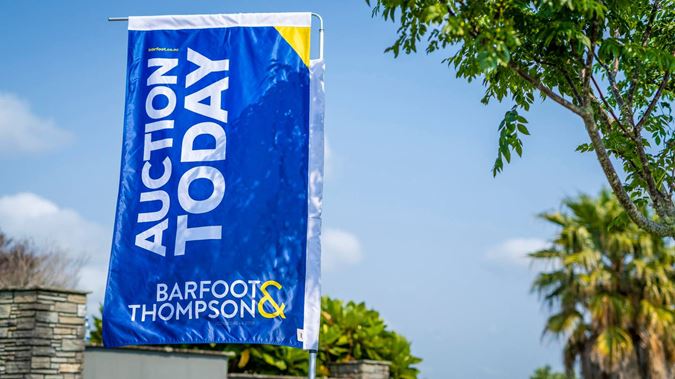PHOTO: FILE
CoreLogic characterizes 2023 as a year divided into two distinct halves for New Zealand’s property market. Their comprehensive report, titled ‘2023: A turning point for the NZ housing market,’ not only reviewed the past year and offered forecasts for 2024 but also delved into data spotlighting New Zealand suburbs with the most significant increases in property values.
Special Offer – Profile your business online for 12 months | www.propertynoise.co.nz EST. 2015
Despite the overall sluggish property market in the past year, specific areas in New Zealand defied the trend, exhibiting the highest average increases in property value over the preceding 12 months:
- Sunshine Bay (Queenstown) +6.6 percent
- Karoro (Greymouth) +3.9 percent
- Lake Hayes Estate (Queenstown) +3.8 percent
- Mataura (Gore) +3.4 percent
- Mornington (Wellington) +3.0 percent
- Albert Town (Queenstown) +2.6 percent
- Cromwell +2.6 percent
- Westport +2.5 percent
- Kingston (Wellington) +2.4 percent
- Lake Hāwea +2.3 percent
Conversely, certain areas experienced declines in property value over the same period:
- Featherston -16.0 percent
- Marton -15.3 percent
- Raumanga (Whangarei) -13.4 percent
- Glendowie (Auckland) -13.0 percent
- Ostend (Auckland) -12.8 percent
- Petone -12.8 percent
- Karaka Bays (Wellington) -12.5 percent
- Martinborough -12.5 percent
- Matakana (Auckland) -12.4 percent
- Pahiatua -12.4 percent
CoreLogic’s report highlighted a national property value increase of 0.4 percent in October and 0.7 percent in November. Zooming out, it showcased areas across the country that experienced the most significant value gains over the past five years:
- Mataura (Gore) +138.9 percent
- Raetihi (Ruapehu) +128.1 percent
- Wairoa +125.2 percent
- Waverley (South Taranaki) +122.6 percent
- Elgin (Gisborne) +122.3 percent
- Outer Kaiti (Gisborne) +118.6 percent
- Pātea +118.3 percent
- Mangakino (Taupō) +114.4 percent
- Manunui (Ruapehu) +110.5 percent
- Reefton +106.1 percent
Intriguingly, three Auckland suburbs near the CBD were the only ones in the country to experience a decline in value over the past five years, while other Auckland suburbs and Wellington Central showed minimal growth.
The most expensive suburbs in New Zealand in 2023, based on median value, remained concentrated in Auckland:
- Herne Bay $3,161,400
- Saint Marys Bay $2,697,500
- Remuera $2,451,850
- Westmere $2,377,700
- Ponsonby $2,347,550
- Campbells Bay $2,097,150
- Shamrock Park $2,094,900
- Ōrākei $2,048,550
- Kohimarama $2,039,900
- Takapuna $2,027,800
Conversely, the most affordable areas in the country in 2023, based on median value, included:
- Cobden (Greymouth) $258,200
- Blaketown (Greymouth) $277,750
- Pātea (South Taranaki) $292,800
- Mataura (Gore) $294,000
- Wairoa $297,050
- Appleby (Invercargill) $319,650
- Manunui (Ruapehu) $324,850
- Westport $324,950
- Manaia (South Taranaki) $328,600
- Kew (Invercargill) $333,950
CoreLogic observed that the first half of 2023 witnessed declining property sale volumes and house prices, reaching a low point in April with sales volumes at their lowest in about 40 years. The 12-month moving total stood at just 60,475, with national property values decreasing by an additional 5 percent over the year.
Market conditions began to shift from May and June onward, attributed to changes in credit costs and mortgage availability. CoreLogic NZ Chief Property Economist Kelvin Davidson noted that sales volumes are now consistently rising, albeit from a low base, with strong percentage gains not yet translating into significant increases in the number of deals.
BOXING DAY SALE 2023: Looking for a real estate database of 3 x suburbs from $99 plus gst? | SALE
The rebound in 2023 can be partly attributed to the surge in net migration to New Zealand, reaching a record high of over 128,000 annually. While this increased migration hasn’t single-handedly stimulated sales volumes or house prices, it has intensified pressure on an already limited supply of rental properties, benefiting landlords but posing challenges for tenants.
Notably, rent prices experienced substantial acceleration in 2023, with the following areas witnessing the most significant increases:
- Fairview Heights (Auckland) +32.4 percent
- Auckland Central +31.1 percent
- Fendalton (Christchurch) +30.0 percent
- Wānaka +29.3 percent
- Frankleigh Park (New Plymouth) +25.0 percent
- Jacks Point (Queenstown) +20.6 percent
- Lyttelton (Christchurch) +20.4 percent
- Birchville (Upper Hutt) +20.0 percent
- Camborne (Porirua) +20.0 percent
- Picton +19.8 percent
Conversely, certain areas experienced the most substantial average rent decreases in 2023:
- Herne Bay (Auckland) -14.5 percent
- Solway (Masterton) -7.6 percent
- Point Chevalier (Auckland) -6.7 percent
- Boulcott (Lower Hutt) -6.5 percent
- Crofton Downs (Wellington) -6.3 percent
- Māpua (Tasman) -5.7 percent
- Lynfield (Auckland) -5.0 percent
- Wilton (Wellington) -4.8 percent
- Silverstream (Upper Hutt) -4.4 percent
- Oriental Bay (Wellington) -4.4 percent
Looking ahead to 2024, CoreLogic predicts an “underwhelming upturn” as the housing market transitions into its next phase. Kelvin Davidson highlighted the continuing influence of the labor market and mortgage repricing processes. Despite a positive kickoff in the New Year, driven by a property-friendly government, Davidson anticipates a cautious return of investment due to low rental yields and high mortgage rates.
He emphasized that the expected 10 percent rise in sales and 5 percent growth in prices would still fall below long-term average levels. With gross rental yields remaining low, typical property investment purchases in 2024 will require substantial additional income, creating a practical hurdle for investors. Despite a more positive mood, CoreLogic acknowledges the challenges in the real estate landscape















